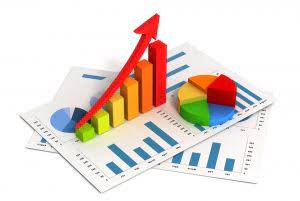
The goal is to produce a product or service at the lowest possible cost while standard costing system meeting quality standards. Traditional approaches limit themselves by defining cost behavior only in terms of production or sales volume. Moreover, standard costing aids in the valuation of inventory on the balance sheet. By assigning standard costs to inventory items, businesses can maintain a consistent and reliable method for valuing their stock.
- This basic standards can be used in the preparation of current standards as well.
- The manager appears responsible for the excess, even though they have no control over the production requirement or the problem.
- The 1st of the New Year is approaching quickly, which means only one thing for many cost accountants and manufacturers- time to switch or “roll over” standards to the latest version.
- Creating precise standards demands significant effort, thorough research, and specialized knowledge.
- Standard costing is a calculated estimate of what costs should be under particular working conditions.
- Carefully consider your budget and compare the features and costs of different systems before making your final decision.
- The actual cost will always be different from the projected standard cost.
Do you own a business?
Positive deviations can even increase team morale by giving them something to celebrate. This allows managers to analyze variances, i.e. the differences between predetermined costs and actual costs, and decide on further actions. The difference between actual costs and standard costs is known as « variance ». There is a favorable variance when actual costs are less than standard costs. An unfavorable variance occurs when actual costs are higher than the standard. These standards reflect the management’s anticipation of what actual costs will be for the current period.
Calculating Standard Costs

Such special costs would not be accounted for in inventory bookkeeping under a standard costing system. Instead, these extra costs would be added to variance accounts after actual costs were compared to standard costs. Standard costs are essential to any business, as they help businesses track and analyze expenses. Typically, standard costs are based on historical data – that is, they reflect the past spending patterns of a company to estimate future costs. Or, a retailer might use standard costs to set prices for their products based on the average markup typically applied in their industry. Standard costs are essential in helping businesses make informed decisions that drive profitability and growth.
Essentials of an Effective System of Standard Costing

When the employees of the business know the standards they must meet, they are motivated to work efficiently. However, these standards must be achievable and realistic or else they can have a negative effect on the motivation of employees. In addition, management shall need to distinguish the controllable and non-controllable factors for the evaluation of performance. With Sage Intacct, for example, you’re empowered to make smarter decisions that optimize inventory levels, set efficient reorder points and quantities, and use working capital more efficiently. When cost accounting was developed in the 1890s, labor was the largest fraction of product cost and could be considered a variable cost. Workers often did not know how many hours they would work in a week when they reported on Monday morning because time-keeping systems (based in time book) were rudimentary.
If the standard cost doesn’t match the actual costs, it Food Truck Accounting can lead to inefficiencies and losses. Another problem with standard costing is that it can encourage managers to find ways to artificially lower costs rather than find ways to improve efficiency and reduce waste. For example, suppose managers are given bonuses for meeting or exceeding their cost targets.

Is there any other context you can provide?
- It includes direct material, direct labor, and manufacturing overhead costs.
- On the plus side, this system provides excellent uniformity and orderliness.
- When an organization develops the standard costs per finished good sold, it can take the budgeted volume, multiply the two, and arrive at the total budgeted cost of goods sold (COGS).
- Also, standard costs are often used when pricing decisions or determining product profitability.
- The advantage of basic standards is that they can provide better comparisons within the business, allowing present data to be easily comparable to past data.
- These reasons may include helping in the decision-making process of a business, increasing the efficiency and effectiveness of different processes and for the preparation of budgets.
Standard hour means a hypothetical hour, which represents the amount of work that should be performed in one hour under standard conditions. We will discuss later how to handle the balances in the variance accounts under the heading What To Do With Variance Amounts. To determine the standard for overhead, the coffee shop would first need to consider that it has two types of overhead, as shown in. For example, the coffee company mentioned in the opening vignette may expect to pay $0.50 per ounce for coffee grounds. After the company purchased the coffee grounds, it discovered it paid $0.60 per ounce. Ask a question about your financial situation providing as much detail as possible.

However, in some industries where target costing may not be as effective. When deciding whether or not to use target costing, it is crucial to consider the unique cost structure of your industry and how target costing might impact your business. The 1st of the New Year is approaching quickly, which means only one thing for many cost accountants and manufacturers- time to switch or “roll over” standards to the latest version. Because standard costing is so challenging, asking an expert to help fix the problems is valuable. By incorporating these tools and practices into their workflows and analyses, management accountants can improve the quality of their work and its effects on an organization. Conversely, if production has decreased, but the standard cost remains the same, it’s likely that the standard cost is too high.
